Related Research Articles
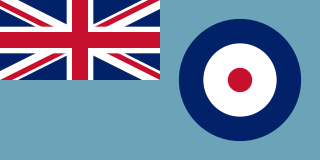
The Desert Air Force (DAF), also known chronologically as Air Headquarters Western Desert, Air Headquarters Libya, the Western Desert Air Force, and the First Tactical Air Force (1TAF), was an Allied tactical air force created from No. 204 Group RAF under RAF Middle East Command in North Africa in 1941 to provide close air support to the British Eighth Army against Axis forces. Throughout the Second World War, the DAF was made up of squadrons from the Royal Air Force (RAF), the South African Air Force (SAAF), the Royal Australian Air Force (RAAF), the United States Army Air Forces (USAAF) and other Allied air forces.

The Westland Lysander is a British army co-operation and liaison aircraft produced by Westland Aircraft that was used immediately before and during the Second World War.

Number 28 Squadron, also known as No. 28 Squadron or No. 28 (AC) Squadron, is a squadron of the Royal Air Force. Based at RAF Benson, it serves as the RAF's Operational Conversion Unit for the Westland Puma HC2 and Boeing Chinook HC5/6/6A helicopters.
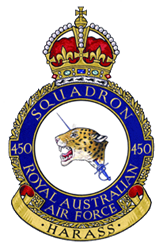
No. 450 Squadron was a unit of the Royal Australian Air Force (RAAF) that operated during World War II. Established at RAAF Station Williamtown, New South Wales, in February 1941, it was the first Australian Article XV squadron formed under the Empire Air Training Scheme.
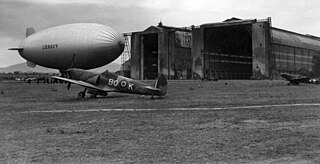
No. 451 Squadron was a Royal Australian Air Force army cooperation and fighter squadron of World War II. It was formed at Bankstown, New South Wales, on 12 February 1941 and began flying operations on 1 July as part of the North African Campaign in Egypt and Libya. No. 451 Squadron was withdrawn for refitting in early January 1942 and spent the remainder of the year performing garrison duties in Syria. In January 1943, it was transferred to Egypt to contribute to local air defence but saw almost no combat. This inactivity caused morale among the squadron's personnel to greatly deteriorate.

Redhill Aerodrome is an operational general aviation aerodrome located 1.5 NM south-east of Redhill, Surrey, England, in green belt land.
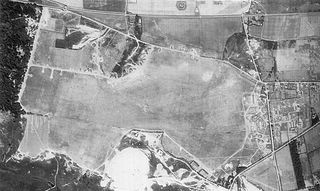
Royal Air Force Warmwell or more simply RAF Warmwell is a former Royal Air Force station near Warmwell in Dorset, England from 1937 to 1946, located about 5 miles east-southeast of Dorchester; 100 miles southwest of London.

The Westland Wapiti was a British two-seat general-purpose military single-engined biplane of the 1920s. It was designed and built by Westland Aircraft Works to replace the Airco DH.9A in Royal Air Force service.

Royal Air Force Fairwood Common, or more simply RAF Fairwood Common, is a former Royal Air Force Sector Station located on Fairwood Common, on the Gower Peninsula, to the west of Swansea. It is now the location of Swansea Airport.
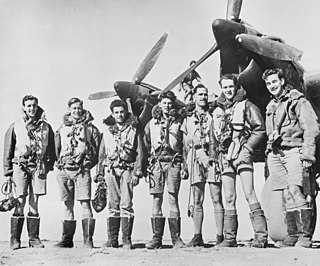
Article XV squadrons were Australian, Canadian, and New Zealand air force squadrons formed from graduates of the British Commonwealth Air Training Plan (1939) during World War II.

No. 613 Squadron was an Auxiliary Air Force later Royal Auxiliary Air Force squadron formed on 1 February 1939 at the then new municipal airport at Ringway, nine miles south of Manchester. The squadron served at first in the army cooperation role, and later during the Second World War became a tactical bomber unit. After the war the squadron reformed as a fighter unit and as such flew until its last disbandment in March 1957.
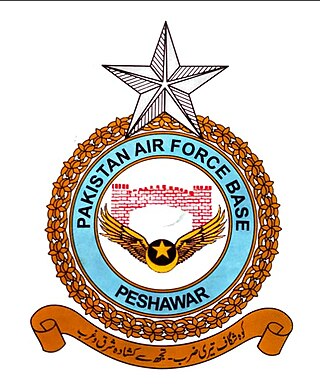
Pakistan Air Force Base, Peshawar is an airbase of the Pakistan Air Force (PAF) located in Peshawar, Khyber Pakhtunkhwa, Pakistan. It is the operational site of the PAF's Northern Air Command, located to the east of Bacha Khan International Airport, which is shared by both civil aviation flights and military flights.

Royal Air Force Matlaske or more simply RAF Matlaske is a former Royal Air Force satellite station to RAF Coltishall, situated near Matlaske in Norfolk, England.

440 Transport Squadron is a unit of the Canadian Armed Forces under the Royal Canadian Air Force. It is part of 8 Wing and works closely with Joint Task Force (North) in Yellowknife, Northwest Territories.
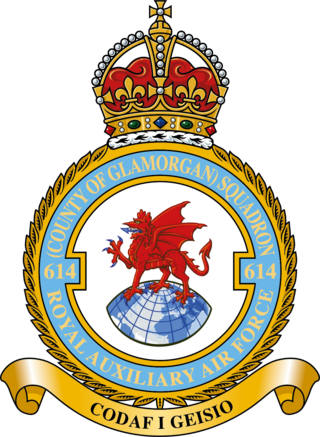
No. 614 Squadron was originally formed on 1 June 1937 as an army co-operation squadron unit of the Auxiliary Air Force. It served during the Second World War first in this role and later as a bomber squadron. Upon reformation it served as a fighter squadron until the disbandment of the Royal Auxiliary Air Force on 10 March 1957.
No. 2 Squadron was a Royal Canadian Air Force (RCAF) squadron active during the late 1930s. The squadron operated army cooperation aircraft from 1935, and upon the outbreak of World War II was selected for overseas duty. However, a shortage of aircraft forced its disbandment in late 1939 to reinforce two other squadrons.
References
Notes
- ↑ The Westland Lysander II in Indian Air Force Service Archived 15 January 2008 at the Wayback Machine
- ↑ "No. 104 (GR) Squadron, Indian Air Force". Archived from the original on 16 January 2008. Retrieved 11 January 2008.
- ↑ Air Historical Branch, 'The Campaigns in the Far East,' Appendix 2, n.d.
- ↑ Air Historical Branch, 'The Campaigns in the Far East,' Appendix 2, n.d.
- ↑ Scholefield 1998, p. 49.
- ↑ Rawlings 1982, p. 239.
Bibliography
- Air Historical Branch, [https://www.raf.mod.uk/what-we-do/our-history/air-historical-branch/second-world-war-campaign-narratives/campaigns-in-the-far-east-vol-iii-india-command-sep-1939-nov-1945/ R.A.F. Narrative (First Draft), The Campaigns in the Far East, Volume III, India Command, September 1939 to November 1943, Appendix 2, 167.
- Hall, Alan W. Westland Lysander, Warpaint Series No.48. Luton, Bedfordshire, UK: Warpaint Books Ltd., 2005.
- Halley, James J. The Squadrons of the Royal Air Force & Commonwealth, 1918 -1988. Tonbridge, Kent, UK: Air Britain (Historians) Ltd., 1988. ISBN 0-85130-164-9.
- Rawlings, John D.R. (1982), Coastal, Support and Special Squadrons of the RAF and their Aircraft, London: Jane's Publishing Company Ltd., ISBN 0-7106-0187-5
- Scholefield, R.A. (1998), Manchester Airport, Stroud, Gloucestershire, UK: Sutton Publishing, ISBN 0-7509-1954-X